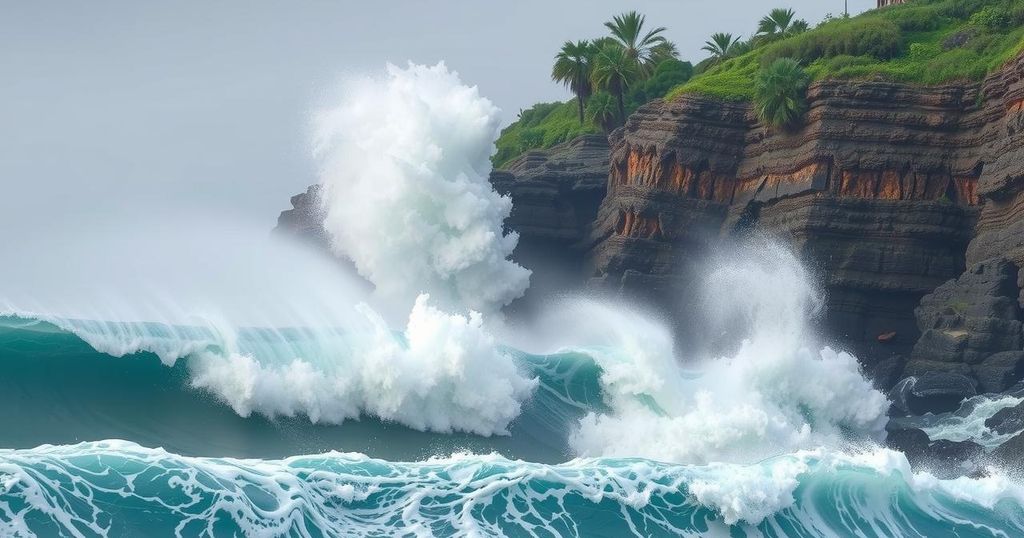Massive waves, up to 4m high, have caused three deaths and nearly 100 port closures across Ecuador, Chile, and Peru. Emergency measures are in place, with authorities warning of future similar events. Economic impacts are severe, especially for the fishing industry, prompting calls for aid. Rescue operations continue for stranded fishermen.
Tragic incidents have occurred as massive waves, measuring up to 4 meters, have struck the coastlines of Ecuador, Chile, and Peru, leading to the deaths of three individuals. Nearly 100 ports in the affected regions have been forced to close due to the hazardous conditions. Jorge Carillo, the secretary for risk management in Ecuador, acknowledged at a press conference that the country is facing an ‘extreme event,’ with warnings that similar occurrences could happen again in the future.
Among the fatalities reported, two have been confirmed in Ecuador’s southwestern Manta region. The Chilean navy reported another death, identifying a 30-year-old man found deceased on a beach. In Peru, authorities closed almost all ports due to ongoing violent wave activity, as noted by Enrique Varea, the head of the naval Oceanographic Department. He predicted that the severe wave conditions would persist in the coming days, although a slight decrease in intensity was expected shortly.
Local media has displayed harrowing images of submerged jetties and public squares in various parts of Peru, prompting residents to evacuate to higher ground. These waves are believed to originate from the United States coastline, caused by strong winds across the ocean surface. Consequently, beaches along central and northern Peru have been closed to safeguard public safety. Many fishermen reported severe losses, with one stating, ‘We need help from authorities. Here, we’ve lost some 100 boats.’
Rescue operations continue as thirty-one fishermen stranded by the high seas were saved by the navy, with reports indicating that around 180 more remained at sea. Callao, the city adjacent to Lima and home to Peru’s largest port, has imposed closures on several beaches, advising against tourist activities. Following damage assessments conducted by Peru’s Minister of Defence, Mayor Roberto Carrillo Zavala of La Cruz district emphasized the significant impact on the fishing community and the broader economy.
This extreme weather phenomenon initiated during the Christmas period is anticipated to persist for two more days, as detailed by Peru’s National Emergency Operations Centre.
In recent weeks, coastal regions of Ecuador, Chile, and Peru have experienced unprecedented meteorological events, leading to severe waves driven by intense oceanic winds. The situation escalated at Christmas, resulting in widespread emergency measures, including port closures and evacuations from low-lying areas. The economic ramifications, particularly for the fishing industry, have raised concerns among local authorities and communities reliant on maritime activities. Historical accounts indicate that such extreme wave conditions are rare, further compounding the urgency of the response needed to mitigate impacts.
In conclusion, the devastating effects of the recent large waves impacting Ecuador, Chile, and Peru underline the urgent need for effective risk management strategies in coastal regions. The fatalities and significant property damage, particularly in the fishing industry, highlight the vulnerability of communities reliant on maritime resources. Moving forward, heightened preparedness and resilience measures will be essential to mitigate the risks associated with extreme weather events that may become more frequent due to changing climate patterns.
Original Source: www.nzherald.co.nz





